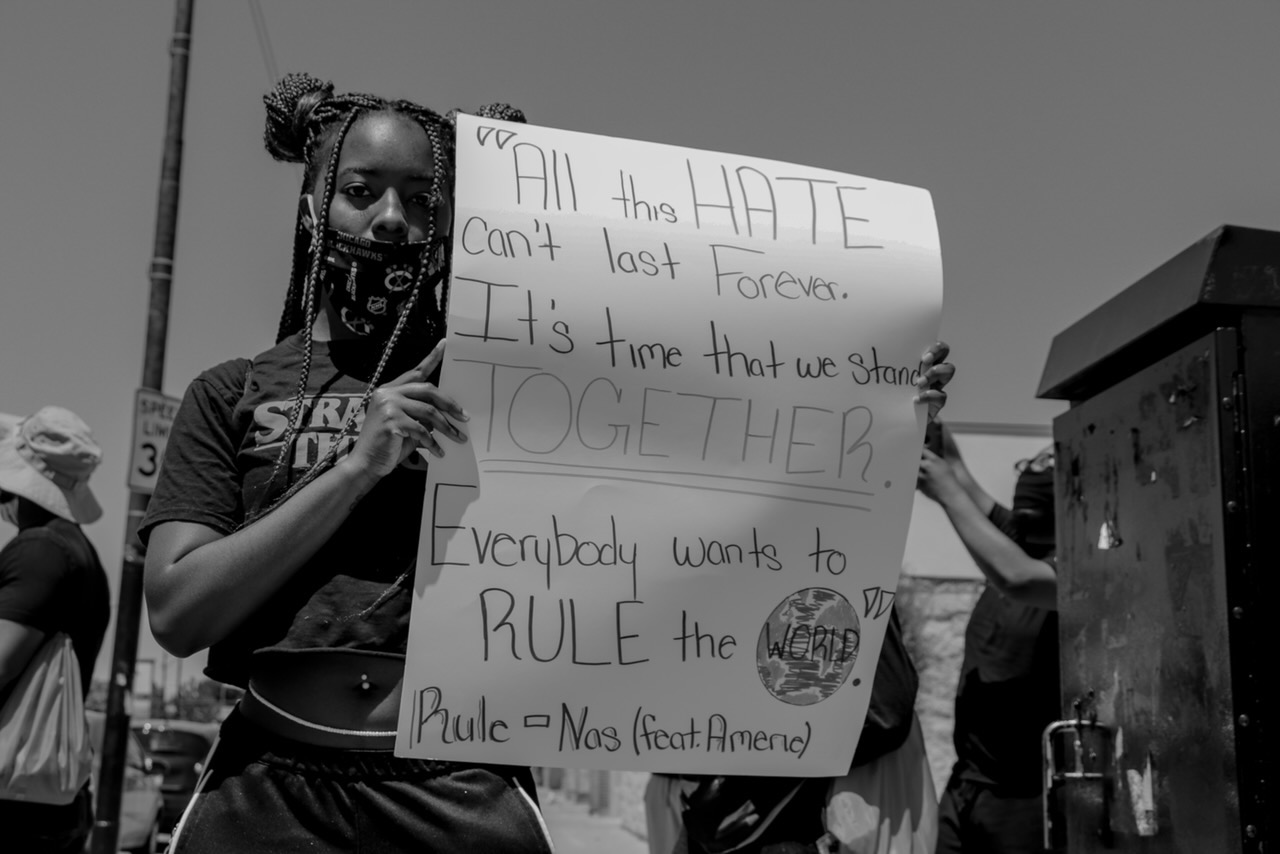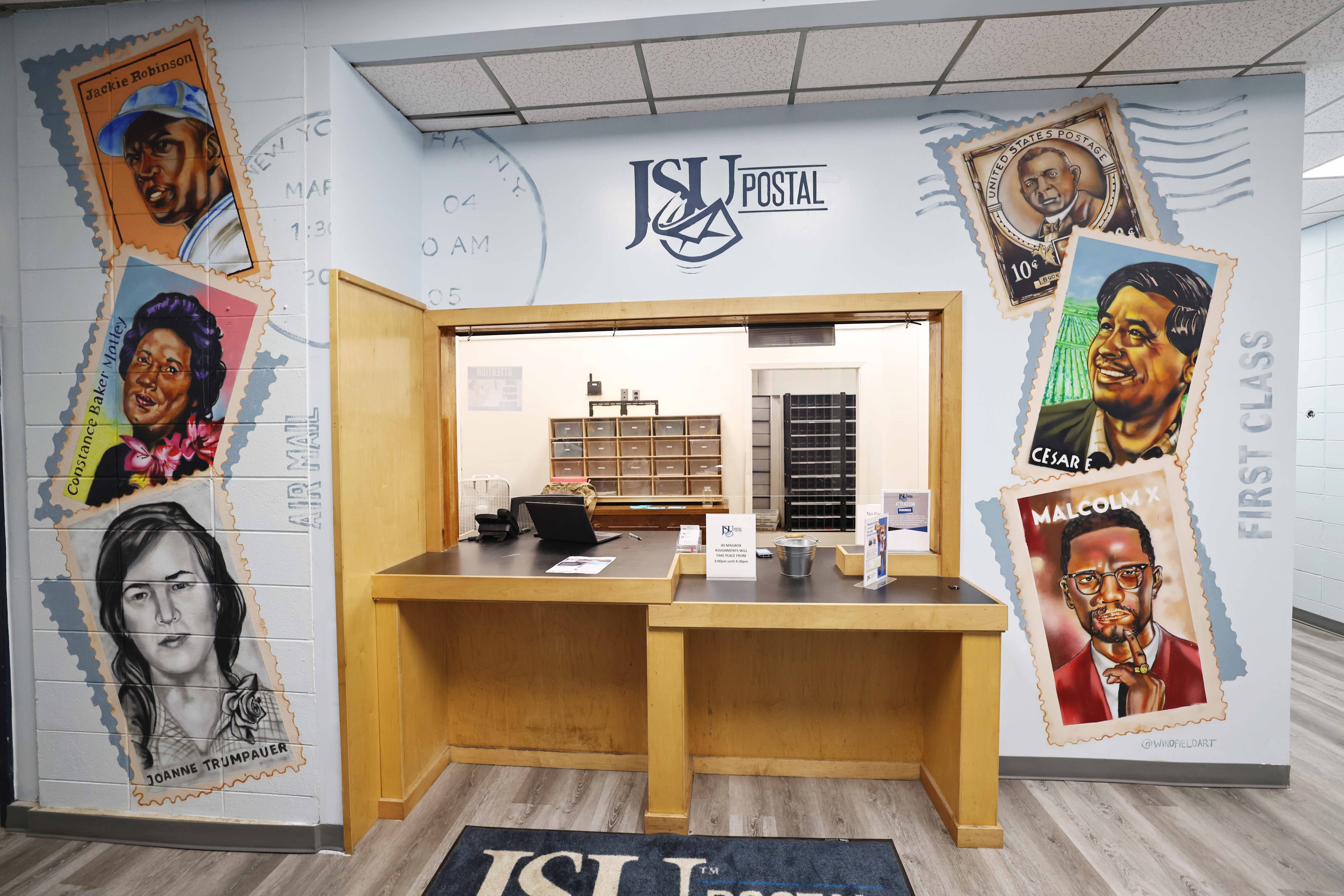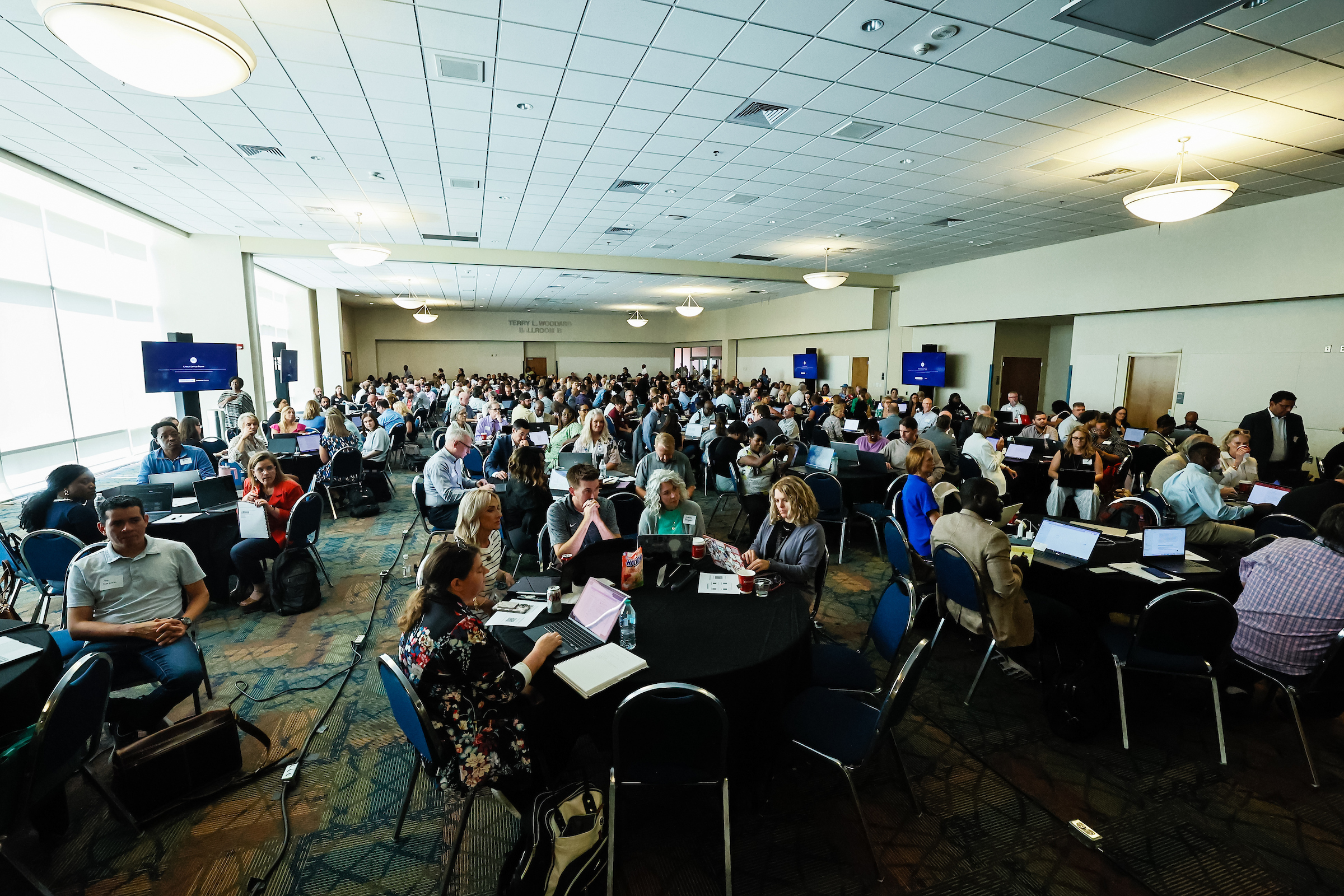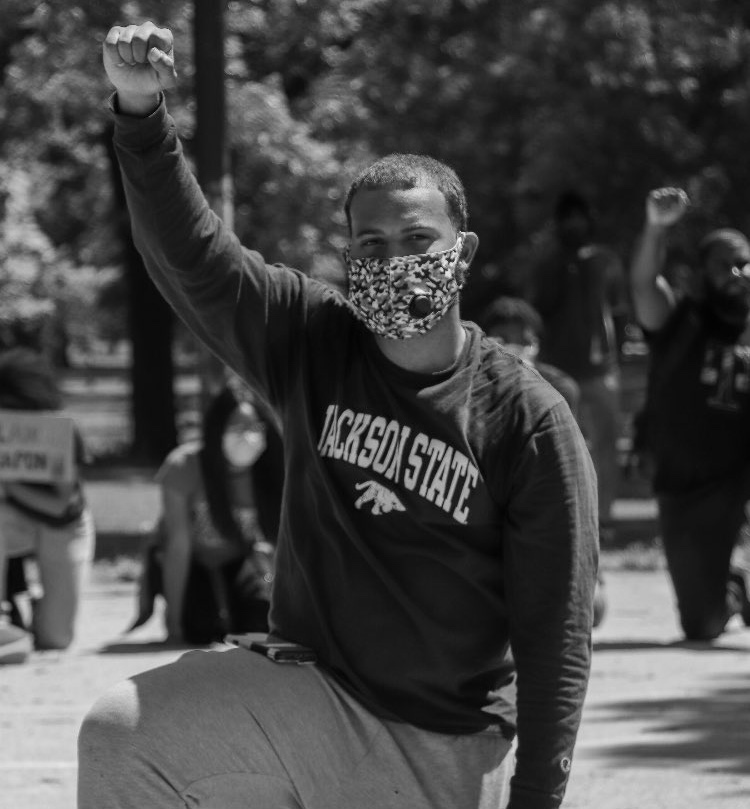
![]() [hr][hr]
[hr][hr]
Aug. 28 marks the 57th Anniversary of the March on Washington, where 250,000 people assembled at the Lincoln Memorial in Washington, D.C. to spotlight the ongoing inequalities faced by African-Americans. It is also the day Dr. Martin Luther King Jr. delivered his iconic “I Have a Dream” speech. King was 34.
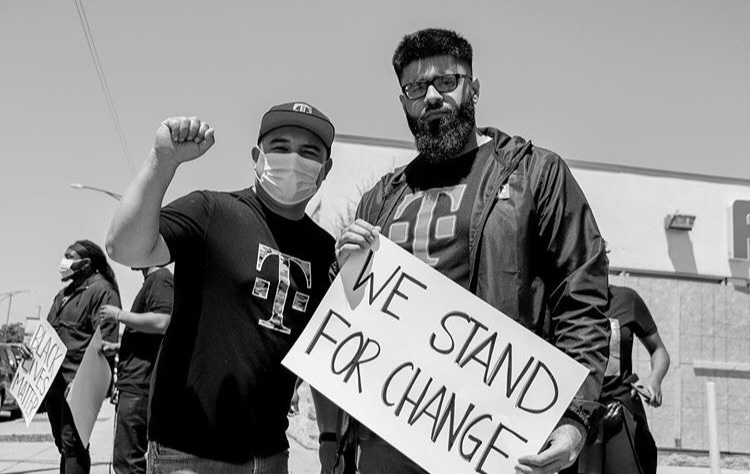
Earlier this summer, 21-year-old Michael Taylor grew deeply unsettled by protests taking place in his hometown of Chicago. The JSU senior then decided to mobilize a march aimed at challenging some of the very same racial injustices Black people protested over 50 years ago.
“Watching the death of George Floyd was like watching a lynching in progress. When you press down on someone’s neck and cut off circulation, how can you feel good about yourself?” asks Taylor, referencing the May incident where George Floyd, a 46-year-old Black man, was killed by a white police officer, who kneeled on his neck for over eight minutes.
[dropcap]F[/dropcap]loyd was arrested on suspicion of passing a counterfeit $20 bill. A bystander recorded the father of two begging for his life until motionless. The cringe-inducing video sparked outrage throughout the country. Furious and fed-up, Americans took to the streets, denouncing police brutality and racial discrimination.
Later, the four Minneapolis police officers involved in Floyd’s death were arrested and charged.
“I kept seeing the protests popping up on Facebook, and I felt like I had to see for myself. But it was so chaotic; we couldn’t do anything but sit there and watch. The police officers were bum-rushing the protestors and treating them as if they had no rights,” said Taylor, a theatre major.
Taylor and a friend caught the “L” – Chicago’s elevated subway train – to take a closer look at what was happening. After arriving on Michigan Avenue, it was difficult for the duo to distinguish the protestors from looters.
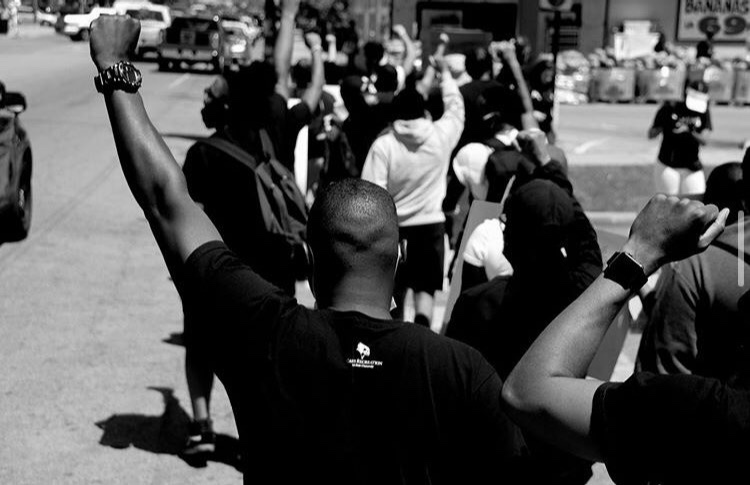
Organized Chaos
“It was so much commotion. The police were hitting people. People were running. Some were looting, and others were marching. I saw people flipping police cars on their side. One police car was on fire,” he shared.
Taylor contends that he and his friend were merely observing the happenings when police officers approached them. “They accused my friend of going inside some store. We tried to explain that we weren’t doing anything. We had just gotten there, but they arrested him. I was left down there by myself.”
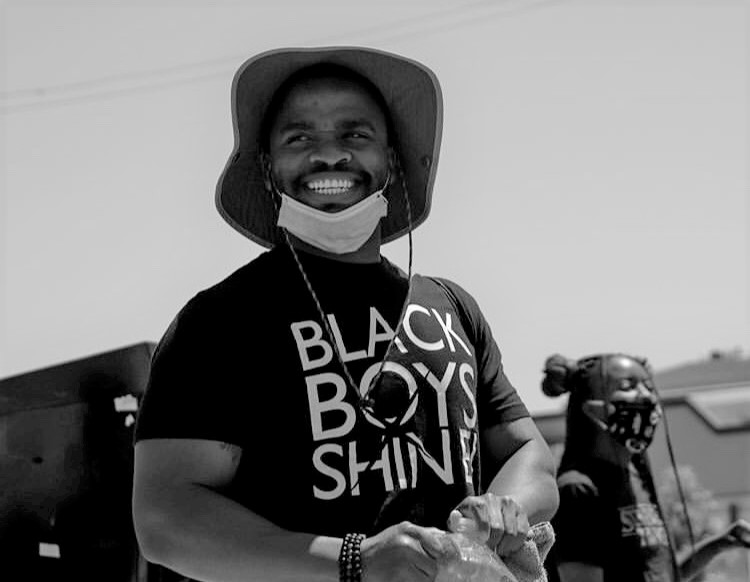
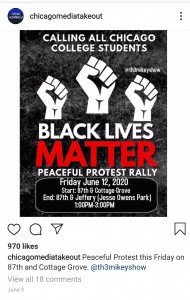
To top things off, all trains and buses were prevented from traveling south, which is the direction Taylor lived. He attempted to get a Lyft, but bottleneck traffic dashed that plan. He then called his friend’s mother.
“That was hard because I had to tell her what happened. She was upset. Any parent would be concerned,” he said.
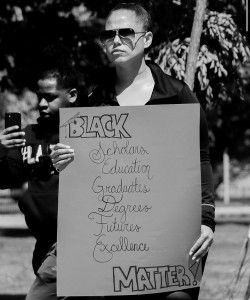
After being held overnight, his friend was released. Motivated by what he witnessed, Taylor began to formulate an idea. Still, he wanted to be sure that he was reacting for the right reasons.
“There’s so much negativity, and I kept seeing videos of police brutality and racism. I believe that racism is a mental illness with no place in society. I just didn’t want to see stuff like that anymore. I needed to take a break (from social media) to make sure I wasn’t protesting out of spite,” he explained.
Hearing the familiar ‘What about Black-on-Black crime?’ rebuttal to the Black Lives Matter movement Taylor said was further disturbing.
“Crime is crime. You don’t hear people saying, ‘Stop the white-on-white crime,’” he stated with vexation. “It’s unfortunate that people harm one another. But at the end of the day, crime is crime. It’s not only happening in Black communities.”
‘On one accord’
Fueled by his concerns, Taylor reached out to his mentor and former Urban Prep Charter Academy teacher Chris Crater.
“He told me he wanted to host a march, and I asked him was he sure,” said Crater, now the community engagement associate at the Obama Foundation in Chicago. “His response was yes, so I told him to set it up, and I’ll help him promote it. I’ll let him lead it, but I told him I would do everything he needed to be successful.”
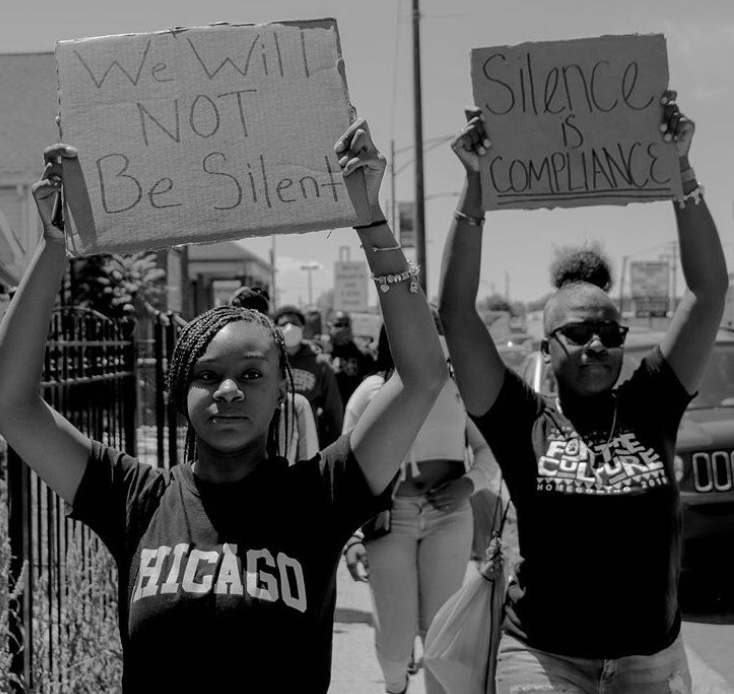
Taylor chose Friday, June 12, from 1-3 p.m., at 87th and Cottage Grove for the date, time and location of his march. He then began promoting the event on Facebook and Twitter.
“I also started sending it to different influencers on Instagram. I sent it to Chicago Media Takeout, which has like 90, 000 followers, and I got them to post it,” he said.
[dropcap]W[/dropcap]hen the day arrived, Taylor admitted that he was excited but anxious.
“I didn’t know what to expect. I was just ready to see what the outcome was going to be like. I didn’t know how many people were going to come, but I hoped it was enough to accomplish something.”

To his surprise, over 40 people showed up with hand-made signs and PPE ready to trek the 1.5-mile route. Local police, who Carter called for assistance, helped escort the group of young men and women.
“We walked holding our signs and chanting ‘Black Lives Matter,’ ‘RIP George Floyd’ and things like that,” Taylor shared. “We got so much love from people driving past. When we got to certain main streets, it became something out of a movie.”
People honked their horns in solidarity and others parked their vehicles and joined them. The group was even greeted by raised fists hanging out of car windows, he recounted.
“It really touched me. Everybody was on one accord. I saw people that I know are involved in gangs, and they stopped and marched with us. It was a moment because a lot of people I didn’t know came to the protest,” he said. “They were really enthusiastic. Although I was the leader of the protest, I didn’t have to lead. There were so many student-leaders stepping up. It was crazy to see everything unfold.”
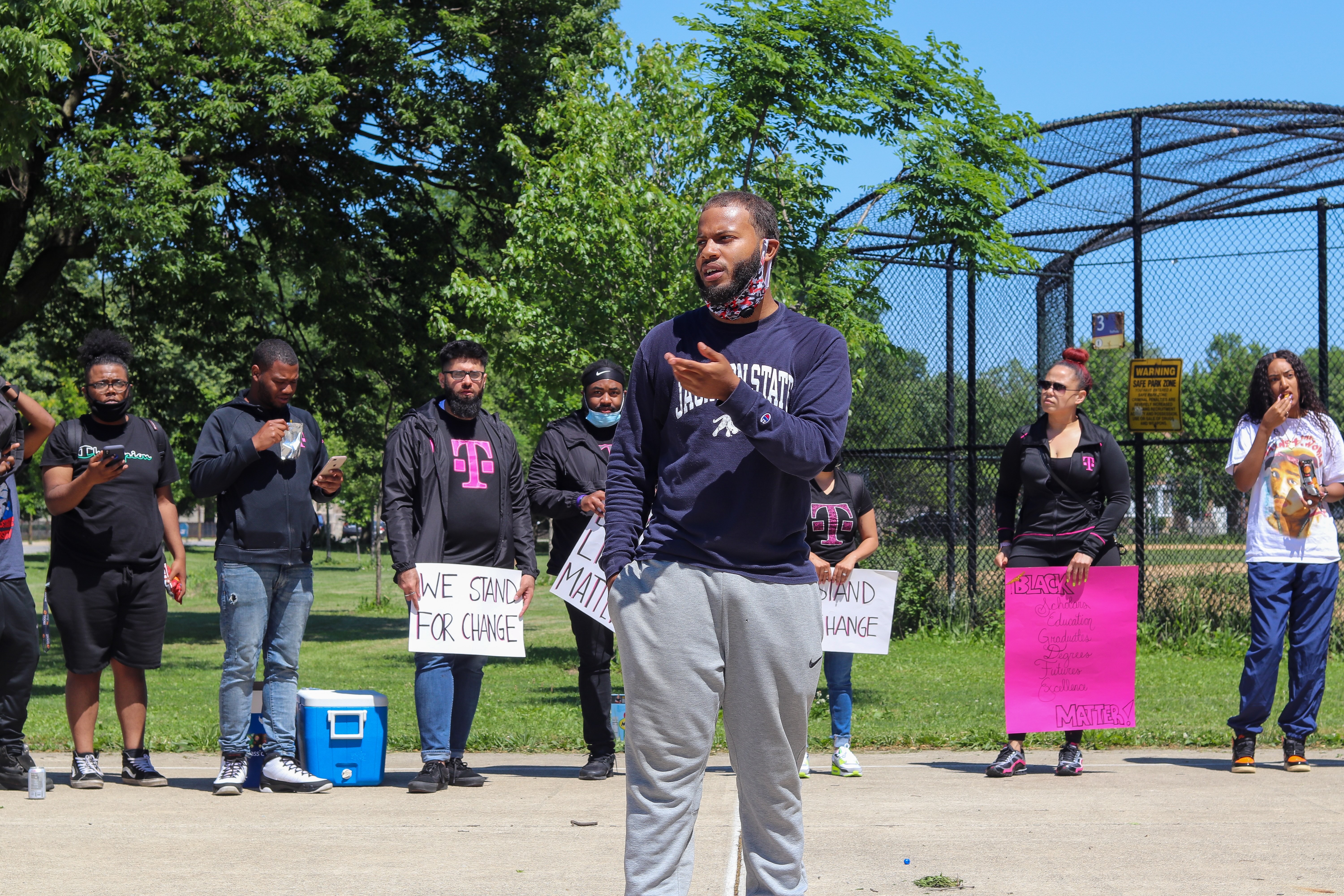
Taylor commended students from Jackson State University, Alcorn State University, Grambling State University, and other institutions for lending their support and supplying an HBCU presence.
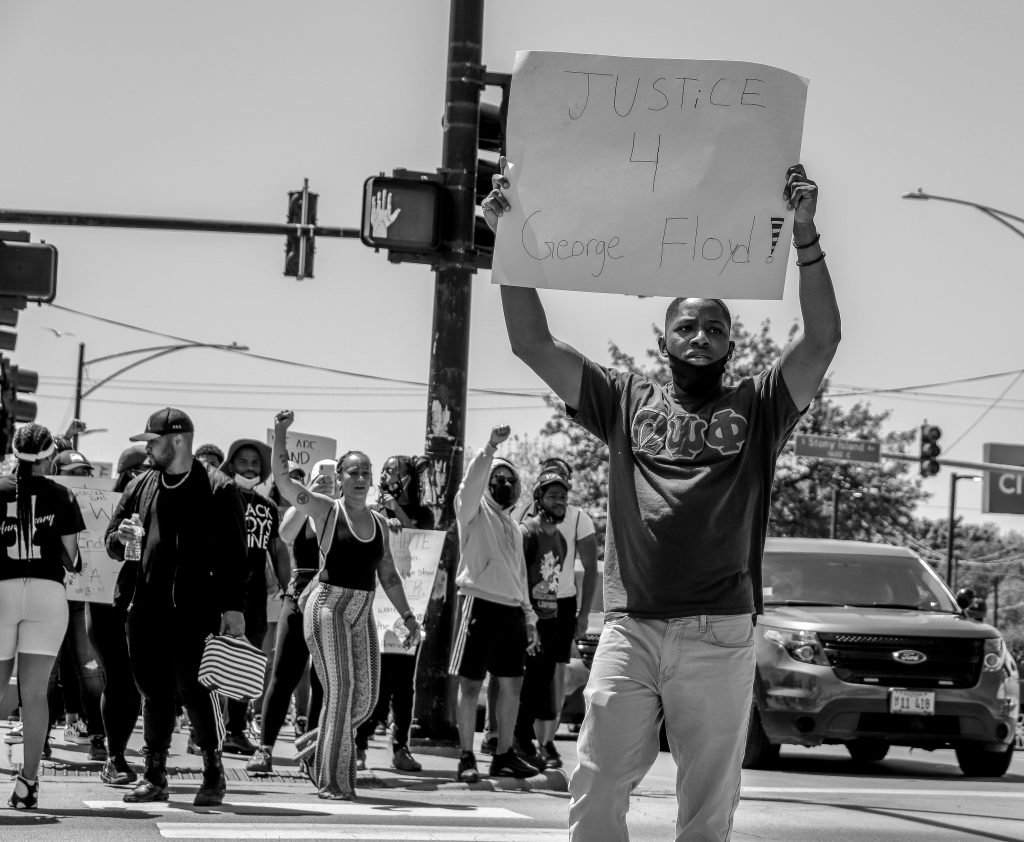
Christopher Calhoun, a rising junior at JSU, also participated in the march. A member of Omega Psi Phi Fraternity, Inc., Upsilon Epsilon chapter, Calhoun gave props to the organization’s community service efforts.
He, and members of the fraternity, passed out goodie bags containing bottled water, fruit, vitamins and face masks.
“I felt the protest brought a lot of students from HBCUs together. There were also a lot of people from diverse backgrounds that joined the march. I was excited to be there and represent as a Black man,” he said.
The therapeutic recreation major also voiced gratitude for the cooperation of the officers on the scene, especially during a time when police and Black communities are at odds.
[dropcap]O[/dropcap]nce the group arrived at 87th and Jeffery, they kneeled and conducted a moment of silence for eight minutes and 46-seconds in tribute to Floyd. Afterward, Taylor gave an impromptu speech.
“I just shared my appreciation for everyone coming. I talked about the importance of what we were doing, why we were doing it and how we could move forward. I wasn’t prepared to speak, but everything I said came from the heart.”
Carter called the event powerful and expressed his pride at watching his former student execute such a meaningful occasion.
“He killed it. He convened the folks. He picked the route. He had a vision, and he fulfilled it. It was literally about African-American and Latino college men and women who want something better for themselves right now,” said Carter. “It was a powerful situation because sometimes we present our young people as if they’ll be important in four or five years when they attain a degree or get that fancy job. But, they are empowered right now.”
To honor the 57th Anniversary of the March on Washington, the NAACP recently announced a “2020 Virtual March on Washington” that will take place Aug. 27-28. For more information, click here.
